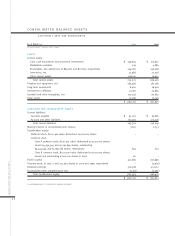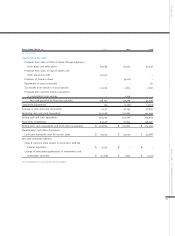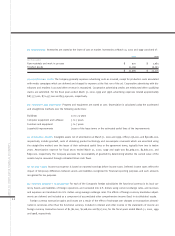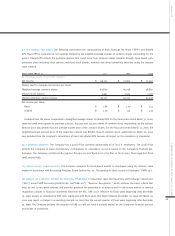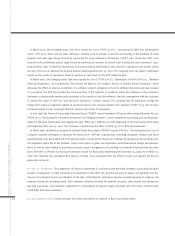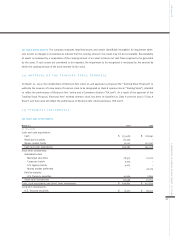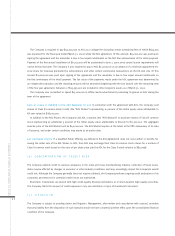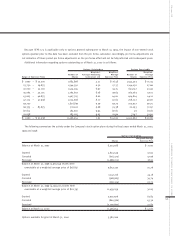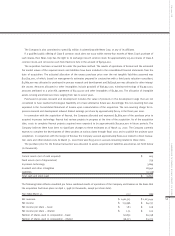Electronic Arts 2000 Annual Report Download - page 48
Download and view the complete annual report
Please find page 48 of the 2000 Electronic Arts annual report below. You can navigate through the pages in the report by either clicking on the pages listed below, or by using the keyword search tool below to find specific information within the annual report.
In March 2000, the Emerging Issues Task Force issued No. 00-02 (“EITF 00-02”),
“Accounting for Web Site Development
Costs”.
EITF 00-02 states that all costs relating to software used to operate a web site and relating to development of initial
graphics and web page design should be accounted for using Statement of Position (“SOP”) 98-1. Under this SOP, costs
incurred in the preliminary project stage should be expensed as incurred, as should most training and data conversion costs.
External direct costs of materials and services and internal direct payroll-related costs should be capitalized once certain criteria
are met. EITF 00-02 is effective for all fiscal quarters beginning after June 30, 2000. The Company does not expect a significant
impact on the results of operations, financial position or cash flows on the EITF’s effective date.
In March 2000, the Emerging Issues Task Force issued No. 00-03 (“EITF 00-03”),
“Application of AICPA SOP 97-2, “Software
Revenue Recognition, “to Arrangements That Include the Right to Use Software Stored on Another Entity’s Hardware”,
which
discusses the effect on revenue recognition of a software vendor’s obligation to host its software that previously was licensed
to a customer. The EITF has reached the conclusion that, if the customer is unable to utilize the software on the customer’s
hardware or contract with another party unrelated to the vendor to host the software, then the arrangement with the customer
is outside the scope of SOP 97-2 and should be treated as a service contract. The Company may be required to change the
timing of its revenue recognition related to product revenues. The Company believes the adoption of EITF 00-03 will not have
a material impact on the Company’s financial position and results of operations.
In June 1998, the Financial Accounting Standards Board (“FASB”) issued Statement of Financial Accounting Standards No. 133
(“SFAS 133”)
“Accounting for Derivative Instruments and Hedging Activities”,
which establishes accounting and reporting stan-
dards for derivative instruments and hedging activities. SFAS 133 is effective as of the beginning of the first quarter of the fiscal
year beginning after June 15, 2000. The Company is determining the effect of SFAS 133 on its financial statements.
In March 1998, the American Institute of Certified Public Accountants (“AICPA”) issued SOP 98-1,
“Accounting for the Costs of
Computer Software Developed or Obtained for Internal Use”.
SOP 98-1 requires that consulting, hardware, software and direct
payroll-related costs associated with the implementation of customized internal-use software be capitalized and amortized over
the estimated useful life of the software. These costs relate to game site application and infrastructure design and develop-
ment, as well as costs related to providing customer account management and building in e-Commerce functionality and inter-
faces. SOP 98-1 is effective for financial statements issued for fiscal years beginning after December 15, 1998. As of March 31,
2000, the Company has capitalized $26,318,000 of these costs associated with the effort to build and support the EA.com
game sites at launch.
(P) USE OF ESTIMATES The preparation of financial statements in conformity with generally accepted accounting principles
requires management to make estimates and assumptions that affect the reported amounts of assets and liabilities and dis-
closures of contingent assets and liabilities at the date of the financial statements and the reported amounts of revenues and
expenses during the reporting period. Such estimates include provisions for doubtful accounts, sales returns and allowances,
warranty provisions, and estimates regarding the recoverability of prepaid royalty advances and inventories. Actual results
could differ from those estimates.
(Q) RECLASSIFICATIONS Certain amounts have been reclassified to conform to fiscal 2000 presentation.
NOTES TO CONSOLIDATED FINANCIAL STATEMENTS
46


